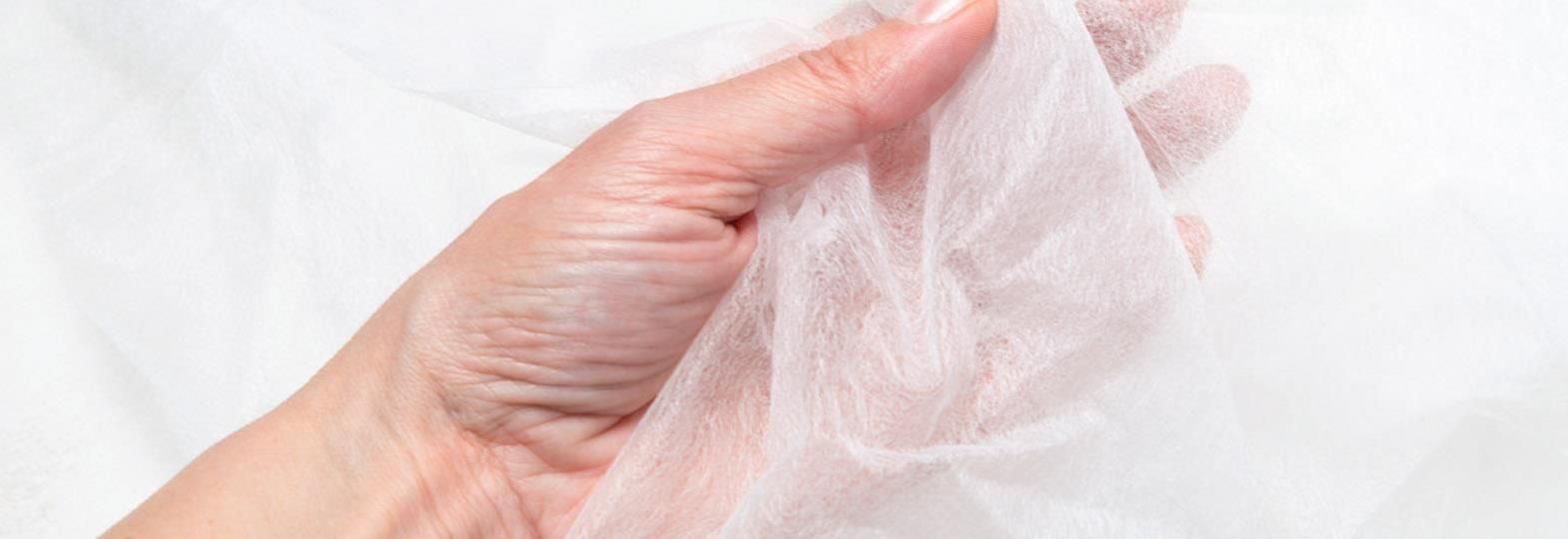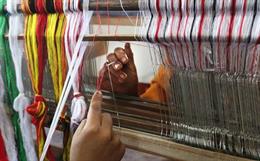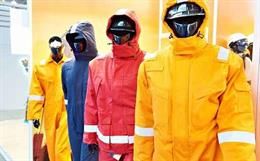Nonwoven fabric is perhaps the textile industry’s most important new development in generations. Going forward, those who commit the time, effort and the capital will be the future industry leaders. This is no exaggeration!
Textile manufacturing may well be the world’s oldest industry, dating back to pre-history. It is remarkable how little has changed over time. It is undeniably true that over the centuries, we have improved the process considerably. The spinning wheel has become ring-spun open-end spinning, followed more recently by newer ‘hi-tech’ machinery. However, the process itself remains little changed from the advances made in the 18th century industrial revolution such as the Hargreaves’ Spinning Jenny and Crompton’s Mule and John Kay’s Flying shuttle. What is true of spinning is equally true of the downstream processes. Weaving is still almost entirely limited to three types: plain weave, twill weave and satin weave. Knits have similar limitations: circular knit, flat knit, and warp knit. While it is true that the move from natural to synthetic dyestuff resulted in great change, that change occurred with the invention of aniline dyestuff in 1856. The popular fabrics we use today, such as corduroy and denim, date back to 17th century France cord-du-roi and de Nime. We think of the changes that technology has brought to schiffli — all over embroidery. Where once the schiffli machine was something complex and fragile, with 512 needles, where the slightest jiggle would render the operation useless, today the latest computerised version is smaller, sturdier and cheaper. This is indeed progress until we recognise that the hi-tech computerised machine of today is but an updated version of the 16th century Broidery Anglaise.
In a world where ever faster change has become the order of the day, we have the right to ask the global textile industry: WHAT HAVE YOU DONE FOR US LATELY?
The fundamental problem is that in the world of traditional textiles, new products are restricted by process limitation.
Nonwoven textiles turns the process on its head. Where once new products had to conform to process, nonwoven textile designs the process to meet the market needs.
For years nonwoven textiles was the orphan of the industry, limited to felt hats, interlining and pool-table covering.
Today the market is just beginning to recognise the advantages of nonwoven fabric. Truly it will bring a new dimension to textiles. If the first Industrial Revolution began with textiles, nonwovens has the potential to bring the second. It is because with nonwovens, production is much less complex and at substantially reduced cost.
While woven fabrics must go through 14 separate processes requiring three separate mills — spinning, weaving (knitting), finishing — nonwoven fabrics go through only 5 separate processes, all at a single location.
The list of advantages provided by nonwoven textiles is almost endless. Just to name a few:
• Better insulation
• Better filtration
• Better absorbency
• Can provide a barrier to bacteria
• Flame retardancy
• Liquid repellency
• Better resilience, permeability, softness, sterility, strength and stretch, when required
• Can be better engineered to meet different requirements
• Can be moulded
• Higher production rates
• Wider widths
• Lower costs
• Potential for full automation
The list of markets is both long and increasing. Some of them are:
• Garments
• Automotive and aeronautic
• Consumer products of all types
• Home furnishing
• Building construction
• Hygiene
• Medical and healthcare
• Packaging
• Road construction
• Sewers and drainage systems
• Agriculture
• Reservoirs and dams
• Sustainability: Liquid waste containment, solid waste disposal and a barrier against soil erosion
The number of specific products can be measured in the thousands.
In addition, nonwoven fabrics serve important military functions too. They are stronger, longer lasting, and more flexible than traditional woven fabrics and therefore can serve an important role in the next generation of body armour.
Cost Vs Benefit
The Benefits
For national textile industries looking to move ahead, developing nonwoven textile capabilities is the way forward. This is an industry in a nascent state. For those willing to make the effort and pay the cost, nonwoven textiles will catapult their industry to become a major player in the global textile market.
For too long the industrialised West and the big-four Asian Countries—South Korea, Japan, Taiwan, and China—have dominated the textile industry. Nonwoven textiles is a new technology with all players acting in the beginners’ role. Therefore, nonwoven textiles offers a chance to move up from second or third tier to become a leader in the technology of the future.
The Costs
As we move upstream, textile/garment investment costs rise geometrically.
At the bottom, a garment factory may cost $500,000-$1,000,000. Towards the top, the spinning mill may cost literally 100 times more, i.e., $50,000,000-$100,000,000. But these costs are little when we arrive at the top. For a chemical plant capable of producing the basic synthetic material necessary to produce nonwoven fabric the cost will be of a higher magnitude. Indeed, you can expect little change from $1,000,000,000. Hence, building a competitive nonwoven textile industry will require a joint effort between government and industry. Given the size of the required investment, governments cannot expect the industry to carry the load alone.
The economics of building the chemical plant is simple.
• The single largest expense is loan repayment
• The product is fungible
• As a result, you cannot reduce production in bad times
Finally, governments will have to recognise that the downstream investment may be substantially higher than estimated because you cannot convert an existing woven textile mill into a mill producing nonwoven fabric.
Conclusion
Nonwoven textiles presents a unique opportunity. It is an entirely new textile sector. Given the history of the global textile industry and its inability to move forward, we cannot expect another similar opportunity in the foreseeable future.
We now live in a different world, with different needs and different technology, all of which is in a constant state of change. What was once impossible, can now be within our grasp.
For years, national textile industries have wanted to move up to become major players in the world of innovation and technology. In a highly competitive rapidly changing world, moving-up in global status is becoming more difficult, with both greater risk and higher costs. If in any country, the government and the industry are prepared to go all-in to become a world economic power, this may well be their best opportunity to succeed, primarily because this is a new technology, as of yet, with no world leader. However, except for China, it is difficult to think any government that will provide the necessary funds to invest in the textile industry.
To succeed in the nonwovens textile sphere, a government must be willing to provide a substantial per cent of the necessary investment, not as a loan but rather as a non-recoverable payment. It must play an active role to ensure that those retained to carry-out the task, work with both diligence and prudence.







